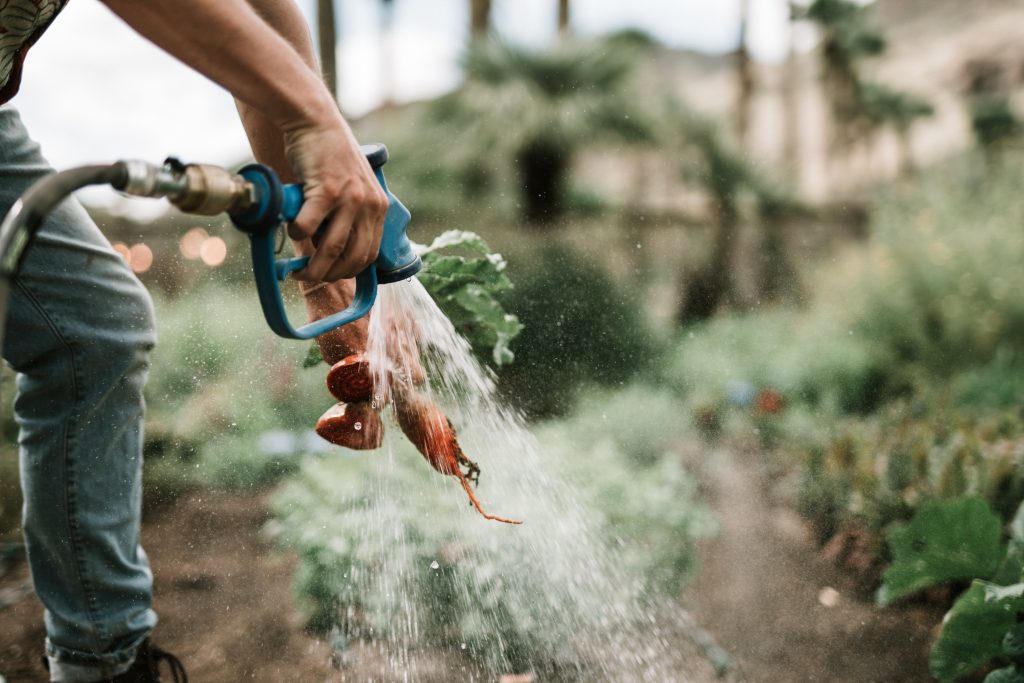
Years ago, when, with the help of my dad, I started my first vegetable garden, I was vaguely aware of the importance of watering plants. I watered whenever I felt like it, and whenever it seemed like my plants yearned for moisture—it turns out many of the symptoms of overwatering and under watering are shockingly similar. I struggled to keep the garden well-watered.
Watering Epiphany
One of the main reasons for my irregular watering schedule was that my garden was tucked away in the depths of the yard, and getting there meant trekking out with shoes and lugging the heavy hose to where it was needed. It was an ordeal. When I moved out of my parent’s home and created a garden plot of my own, I watered here and there but didn’t start really soaking my plants until a year into things. I quickly realized that my haphazard watering wasn’t going to cut it in this new patch of dirt. The spot, blessed with sun, dried out a whole lot quicker than in my very shaded garden of yesteryear.
Tried and True Watering Tools
I’ve spent a couple of years fiddling with water implements and figuring out the best solution for my little garden. Here’s what I’ve found works for me.
Keep your garden well-watered with these must-have supplies.
Expandable hose
They’re typically cheaper than a traditional chunky, cumbersome hose and are easy to carry around the garden. At the end of the season, it’s super easy to pack up the flexible hose and toss it into the bin of supplies that will head to the basement for the winter. The drawback is that flexible hoses are less durable, but if you’re careful and take good care of your watering implement, it should last a few seasons. There are also plenty of high-quality flexi-hoses with triple-layer protection, though they typically cost more. Buy one with a sprayer attachment that features multiple settings. Use the misting setting on tender seedlings and the soaker setting to water plants deeply from below.
Watering can
I use a super durable plastic watering can. It’s been around for years and hasn’t failed me yet. It’s helpful for watering areas where the hose doesn’t reach and for watering when the water is shut for the winter.
Mulch
Mulch won’t provide your crops with water, but it conserves moisture exceptionally well. Without mulch, my topsoil dries up super quickly—even if I water at regular intervals. There are plenty of cheap and free mulch options, including grass clipping, leaf mold, and shredded cardboard or newspaper. My preference is straw, but it’s not always readily available.
Soaker hose
I tried a fancy irrigation set up in my raised beds years ago, and it was an utter failure. The hoses got in the way of my footpaths, and it was more trouble than it was worth. That doesn’t mean I completely gave up on irrigation. I recently installed soaker hoses in some of my ground-level beds, where I plan to plant perennials and other easy-to-maintain plants. Currently, only the hardiest of plants survive there because of the lack of water. The roof overhang blocks the rain and getting the hose there is a pain in the butt, so I use soaker hoses to water the area.
The weather forecast
Overwatering can be as problematic as under-watering, so while you must give thirsty plants sustenance, it’s also wise to check the weather forecast before dumping a whole gallon of water into your beds. Don’t waste this precious resource if it’s looking like a rainstorm is on the way. Unless your plants are begging for water, it can wait.
Do you have any favorite watering tools? How do you keep your garden well-watered? Are you fond of any watering tricks that have netted you lush, bushy plants year after year? I’d love to hear your water-wise tips! Share them with me in the comments.

Steph Coelho is a freelance writer gardening in zone 5b. She is a certified Square Foot Gardener and has taught various garden-related workshops. When she’s not digging in the dirt or writing, she’s cooking up fresh produce, running, or listening to her favorite podcasts.
Leave a Reply